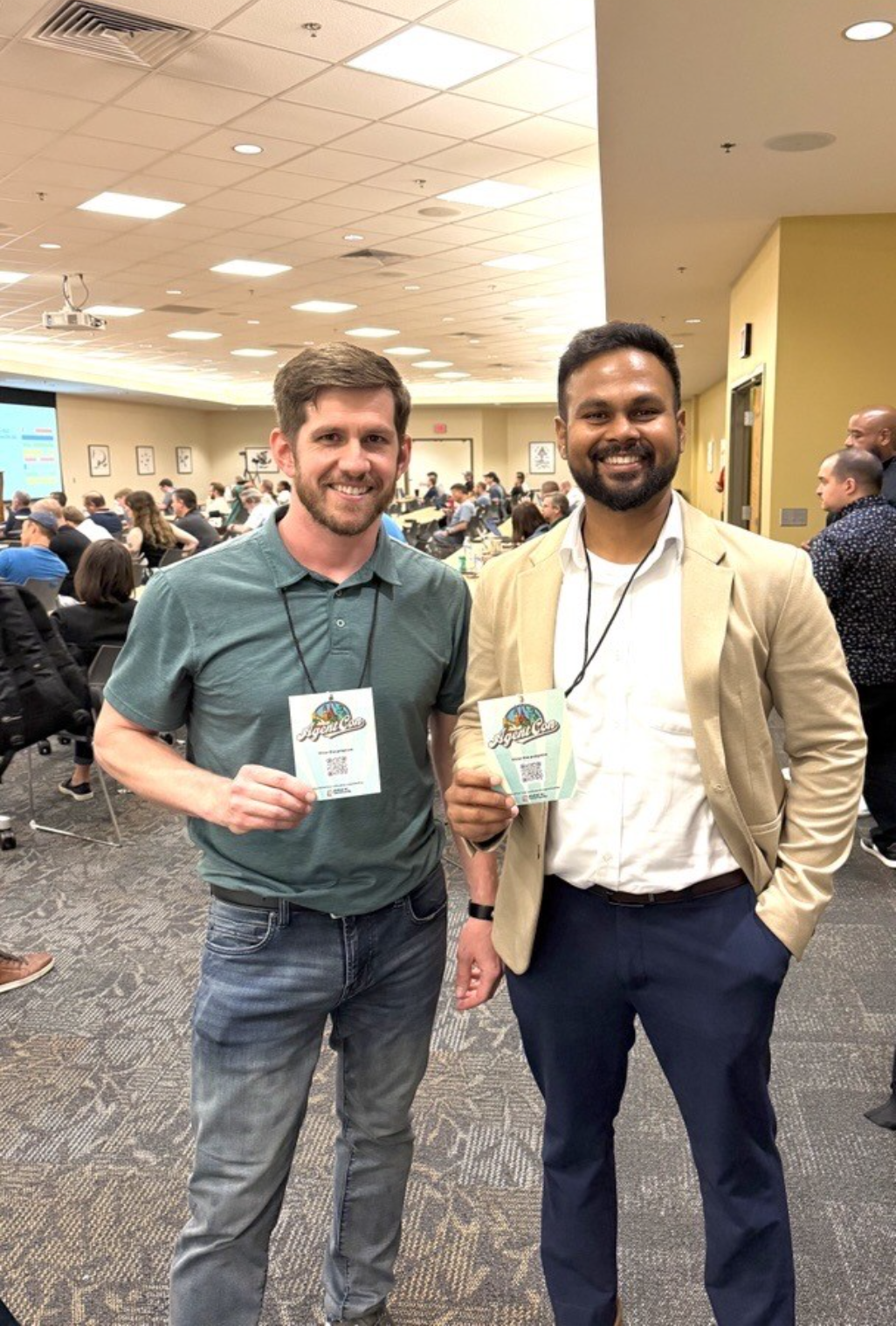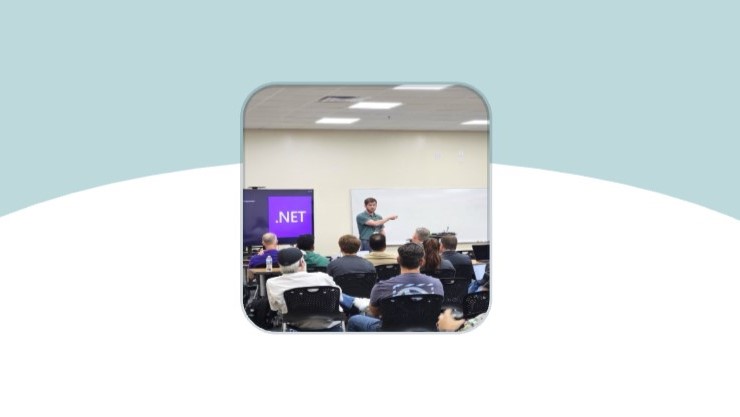Highlights from AgentCon 2025 Kansas City
AgentCon 2025 in Kansas City was a vibrant hub for artificial intelligence (AI) developers and enthusiasts eager to explore the power and practicality of intelligent agents. Among several exciting sessions, Cory Shivers, one of our staff software engineers at WellSky, delivered a standout talk titled “Smart Agents, Stupid Simple: Build a Sidekick with .NET.” The session stood out for its humor, depth, and code-first approach to building AI agents using .NET and Microsoft’s growing AI ecosystem.
What is an agent? (in simple terms)
Cory opened by humorously breaking down the definition of an agent:
“It’s an LLM, a loop, and enough tokens.”
– Thorsten Ball (as quoted)
In essence, an AI agent is a loop interacting with a large language model (LLM) and can perceive input and assist humans in efficient decisions – shaped by prompts, constraints, defined rules, and guardrails implemented by the agent developer to ensure responsible use and human decision making. Cory highlighted the opinion that a good agent should be flexible enough to be “whatever you want it to be.”
From Claude to command line interface (CLI) bots, agents are purpose-driven tools powered by prompt engineering, memory (context), and optional real-time data integrations.
Why agents?
Why build agents at all? Cory gave some compelling reasons:
- They’re fun to build
- They’re useful in real-world tasks
- They can boost productivity
- They hold cost-saving potential, especially in enterprise settings
Examples shared included:
- Code assistants (like Claude)
- Task automators (e.g., for invoicing)
- Data whisperers (for complex queries like, “how many left-handed wrestlers have won a world title?”)
Meeting Dusty – The .NET sidekick
Cory introduced Dusty, a CLI + web-enabled fictional agent inspired by the wrestling legend Dusty Rhodes.
Dusty’s core capabilities included creating GitHub Gists, building Docker Services, and integrating tool-calling, caching, and LLMs. Dusty was built entirely using .NET and Microsoft.Extensions.AI. This showed the power of .NET to handle real-world agent needs with minimal complexity.
Why .NET for AI agents?
Cory made a strong case for .NET, highlighting:
- Enterprise-grade support and maturity
- Full integration with OpenAI, Azure, Ollama, and Groq
- Modern APIs and lightweight software development kits (SDKs)
- Support for dependency injection, rate limiting, and caching
Deep dive into Microsoft.Extensions.AI
Cory showcased how Microsoft.Extensions.AI simplifies the development of intelligent agents.
Key capabilities:
- Completions and embeddings
- Model context protocol (MCP)
- Tool calling (function invocation)
- Vector DB integration
- Rate limiting
- Caching
Code snippets included:
- Tool calling using .UseFunctionInvocation()
- Caching using MemoryDistributedCache
- Rate limiting with ConcurrencyLimiter
- Working with local models like llama3.1 using OllamaSharp
The SDK’s modular design means developers can mix and match components for CLI, chat, or embedded apps.
Live demo & learnings
Cory’s live demo included local and remote chat client usage, tool-calling to fetch real-time data (like weather), and caching repeat prompts for faster responses.
Fun fact: Cory’s laptop crashed on the day of the event, yet he seamlessly transitioned to his wife’s laptop – lesson learned!
What’s next?
Looking ahead, planned upgrades will enable invoice generation, context-aware conversations powered by vector storage, and a distributed multi-agent architecture built with MCP, further expanding flexibility and scalability. Curious about creating your own agents? Start by exploring the MCP and playing with the basics of distributed programming. Combine agents with local models like Ollama to see how flexible things can get. Begin with lightweight CLI tools. Once those are working well, scaling to production will feel like a natural next step. You can check out more on Dusty through the shared Github repo below.
Dusty’s GitHub Repo: rickdotnet/session-dotnet-sidekick
Final thoughts
Cory’s session was a perfect blend of engineering depth and real-world applicability. For any developer in the Microsoft ecosystem, especially those working with CLI tools or backend workflows, the message was clear:
“You can build smart agents—stupid simple—with .NET.”
My learnings from AgentCon 25
Understanding how LLMs integrate with agents was a key theme throughout the event. The next big thing coming is MCP vs A2A (agent-to-agent), and the discussions around it were everywhere. Tools like Claude and Ollama are game changers, opening up new ways to experiment and build. One light-hearted but real takeaway: Always have a backup laptop! And stay adaptable, because every day brings shifts in the AI landscape.

Useful links from other AgentCon 25 speakers for reference:
- https://studio.firebase.google.com/ : There was a demonstration with an AI pair programming example where the agent could suggest coding corrections in real time simply by sharing your code screen.
- Jules : This is an analogous coding assistant to GitHub Copilot, demonstrated with capabilities for managing tasks and repositories.
- aistudio.google.com : A demo on this tool showcased the ability to turn a casual conversation into a structured podcast episode.
- https://stitch.withgoogle.com/: This Al-powered tool helps application builders generate high-quality user interfaces for mobile and web apps and easily export them to Figma or directly access the frontend code.
- https://notebooklm.google.com/ - One presenter walked through the creation of a pickleball rule book with Notebook LLM
- Labs.google/fx - Using MusicFX, attendees were able to witness how new music can be generated by providing specific prompts.
- Soulmachines.com One session broke down how this tool helps users build a custom assistant to simplify and manage daily tasks effortlessly.



